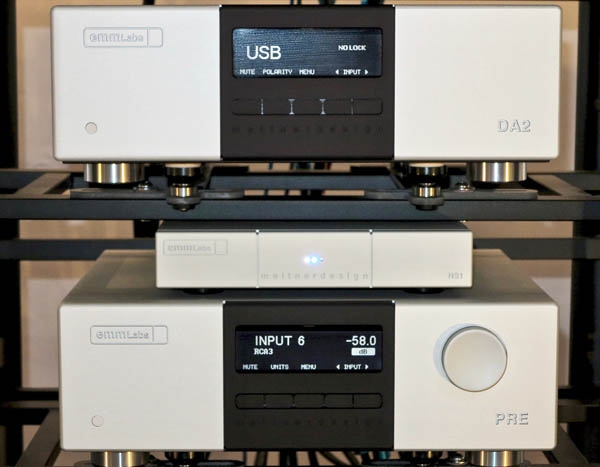| Columns Retired Columns & Blogs |
Sadly, appox. 56 million Apple Music subscribers won't be able to buy this unit :-) ..........


As should be clear from the above photo, the NS1 can also stream music from a host of services, including Tidal and Qobuz.

Sadly, appox. 56 million Apple Music subscribers won't be able to buy this unit :-) ..........

Hi-res MQA files are "unfolded" to to a max of either 24/88 or 24/96; that's the max resolution of any file after undergoing the MQA process. The process doesn't encode the higher resolution material in the source-it's discarded as not necessary for the technically lossy but "perceptually lossless" (MQA term/claim) result.
If they were originally a higher resolution they will then be upsampled to the original resolution in the MQA DAC. But this is upsampling. Above 88 or 96 it is no different than any other upsampling. It's not a true 192 or 384 file like the original source material.
Sorry, that's just a fact. Bob Stuart has confirmed it in interviews when directly asked.
Jason, you need to study how MQA actually encodes. Your writing about it is consistently incorrect. Please don't deny it without doing a thorough check.

So the NS1 can be hooked up to your network and USB computer.
It can handle 192kHz PCM and DSD64 (only) input as reported.
And when it comes to output to the DAC (DA2), the AES and TosLink maxes out at 24/192kHz (good quality TosLinks these days should be able to handle 192kHz). I've seen the Optilink go up to DSD128 reported elsewhere. So where exactly is there any PCM 384kHz being done in this system even for MQA upsampling!? Can the NS1 upsample MQA 24/48 to 384kHz and send that out via Optilink to the DA2 to claim that 384kHz is being processed? Is there a DAC inside the NS1 and analog out we're not aware of?
Obvious follow-up question JVS needed to clarify.